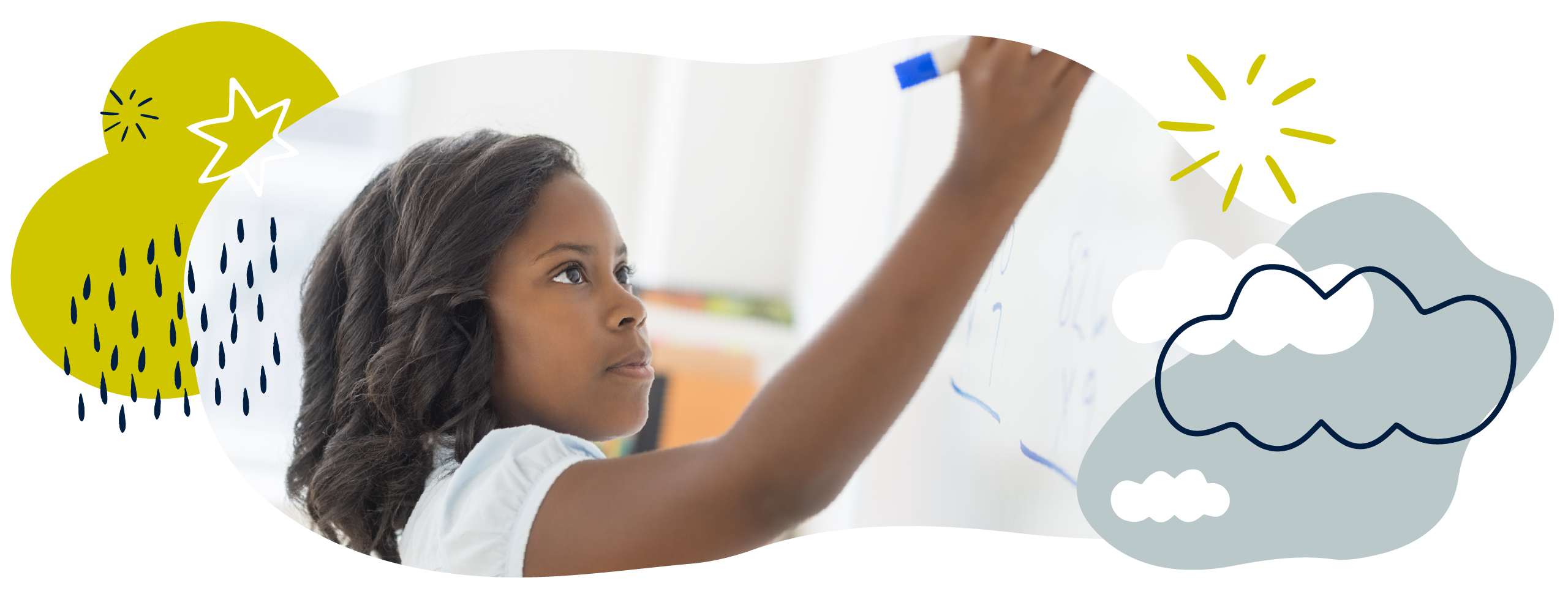Fractions, decimals & percentages
We can all struggle with mathematical concepts, and the world of fractions, decimals and percentages can sometimes send a wave of unease over even the most confident mathematician. However, it’s always good to remember that the understanding of just one of these key concepts underpins and supports the learning of the others.
So whether you need support working out 70% of a number or ⅔ of an amount, as you and your child move through some of our resources you will soon find that the link between all three concepts.
Understanding what fractions, decimals, and percentages mean is essential to be able to calculate and solve maths problems quickly. They will also come up all the time in later life, from dealing with money to cooking.
Maths glossary
Use these quick links or explore our jargon buster for simple definitions and examples of mathematical terms.
- Denominator is name for the bottom number in a fraction.
- Improper fractions are fractions with their numerators bigger than their denominators, for example
This means the fraction is greater than 1.
- Mixed numbers are a way of showing improper fractions using a whole number and a fraction, like 2
- Numerator is the name for the top number in a fraction.
- Unit fractions are fractions with 1 as their numerators, for example
, whereas
is a non-unit fraction because the numerator (3) is greater than 1.
How to help your child at home
You don’t need to be an expert to support your child with maths! Here are four simple but effective ways to help your child develop their understanding of fractions, decimals, and percentages:
1. Fold paper fractions
Cut out shapes such as squares, triangles, rectangles, or circles. Try to find fractions of the shapes by folding.
Can a shape be folded into two, three, four, five equal parts? Investigate different ways to make fractions. For example, can you fold the shape diagonally? Find different ways to fold the shapes in half.
2. Shop for decimals
Explore fractions as decimals when shopping together. Encourage your child to compare prices or dimensions with the same number of decimal places, for example, items costing £1.67 and £1.76. Can they say which number is bigger and explain why?
3. Link fractions, decimals and percentages
Play matching games to help your child understand that decimals and percentages also show fractions. Write some common equivalent values on sticky notes, for example 0.5 and 50% or 0.25 and 25%, and hide them around the house for your child to find.
4. Four for lunch
Working on the imperative of , 25% and 0.25 as equal measures, prepare a meal where everyone has exactly the same amount. This could also include looking at units of measure, for example 0.25 of 60g or 25% of 400ml.
Want more?
To help your child’s learning further, you may want to watch some of the videos included within our dedicated maths library. If you’re looking for more ideas to support learning at home, head over to our maths blog to explore articles full of top tips and fun activities.
What your child will learn at school
For more information about your child’s learning in a particular year group, use this handy drop down menu:
Fractions in Year 1 (age 5–6)
In Year 1, your child will recognise halves and quarters of objects, shapes, and quantities. This includes:
-
- understanding halving as sharing equally into two parts or groups
- understanding finding a quarter as sharing into four equal parts or groups
- knowing that finding a half is the same as dividing by 2
- knowing that finding ‘a quarter’ is the same as dividing by 4.
Fractions in Year 2 (age 6–7)
-
- finding fractions of lengths, shapes, sets of objects, and quantities
- writing simple fractions, such as
of 6 = 3
- knowing that
and
mean the same thing.
Fractions in Year 3 (age 7–8)
In Year 3, your child will be expected to compare and order fractions, and to start adding and subtracting fractions with the same denominator. This includes:
-
- counting up and down in tenths and connecting tenths to dividing by 10
- using unit and non-unit fractions
- understanding equivalent fractions (fractions that have the same value such as
=
).
Fractions & decimals in Year 4 (age 8–9)
In Year 4, your child will explore the link between fractions and multiplication/division, and will begin to learn about decimals. This includes:
-
- solving simple measurement and money problems involving fractions and decimals
- recognising and writing
,
,
, and tenths and hundredths as decimals
- rounding numbers with one decimal place to the nearest whole number.
Fractions, decimals & percentages in Year 5 (age 9–10)
In Year 5, your child will find fractions of numbers and quantities including thousandths and begin to learn about percentages. This includes:
-
- recognising and converting between mixed numbers and improper fractions
- multiplying proper fractions and mixed numbers by whole numbers
- understanding percentages as ‘the number of parts per hundred’ and knowing percentage and decimal equivalents of
,
,
,
, and
.
Fractions, decimals & percentages in Year 6 (age 10–11)
In Year 6, your child will calculate and solve a variety of problems using fractions, decimals, and percentages. This includes:
-
- using common factors to simplify fractions
- multiplying pairs of fractions and dividing fractions by whole numbers
- multiplying one-digit numbers with two decimal places by whole numbers (for example, 1.25 × 2).
